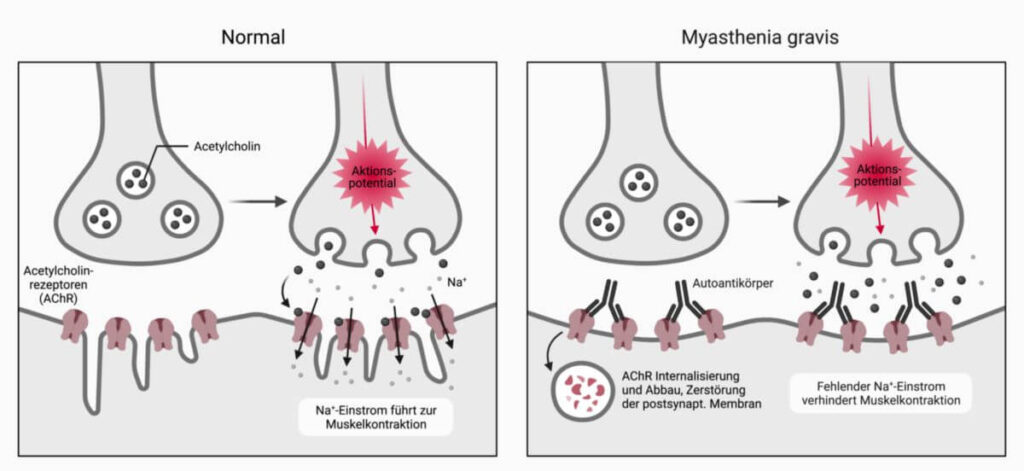
Introduction
Myasthenia gravis (MG) is a chronic autoimmune neuromuscular disorder that affects tens of thousands of Canadians. Characterized by weakness and rapid fatigue of voluntary muscles, MG can significantly impact daily activities and quality of life. The importance of understanding this condition lies in its potential to help those affected seek appropriate diagnosis and treatment, thereby improving their overall well-being.
What is Myasthenia Gravis?
Myasthenia gravis occurs when the immune system produces antibodies that block or destroy the communication between nerves and muscles. This disruption leads to muscle weakness that worsens with activity and improves with rest. Commonly affected muscles include those that control eye and eyelid movement, facial expressions, and other voluntary movements. Symptoms can vary from person to person and may include drooping eyelids, double vision, difficulty swallowing, and overall muscle weakness.
Current Statistics and Research
Recent statistics indicate that around 20 new cases of MG are diagnosed each year per 100,000 people in Canada. Although it is not categorized as a common disorder, raising awareness is essential for early diagnosis, which can significantly affect treatment outcomes. Ongoing research is geared towards understanding the precise autoimmune mechanisms behind MG, with numerous studies focusing on genetic susceptibility and potential environmental triggers.
Treatment Options
The management of myasthenia gravis typically involves a combination of medication, lifestyle changes, and in some cases, surgical intervention. Medications such as cholinesterase inhibitors are commonly prescribed to improve nerve-to-muscle transmission. Additionally, immunosuppressive therapies are utilized to reduce antibody production and alleviate symptoms. In certain instances, thymectomy, the surgical removal of the thymus gland, has shown positive effects in reducing symptoms for some patients.
Living with Myasthenia Gravis
For many, living with myasthenia gravis poses significant challenges. It is crucial for patients to develop a personalized care plan in consultation with healthcare professionals, factoring in their specific symptoms and lifestyle. Support groups and patient advocacy organizations are also available to provide resources and community support, fostering resilience and shared experiences among individuals affected by MG.
Conclusion
In summary, myasthenia gravis is a complex autoimmune disorder that requires awareness, early diagnosis, and individualized management to enhance the quality of life for those affected. As ongoing research continues to unlock new insights into its causes and treatments, it is vital for patients and healthcare providers to engage in open dialogue about symptoms and treatment options. Early intervention remains key in managing the condition effectively and improving patient outcomes.



